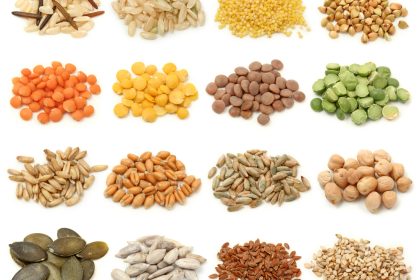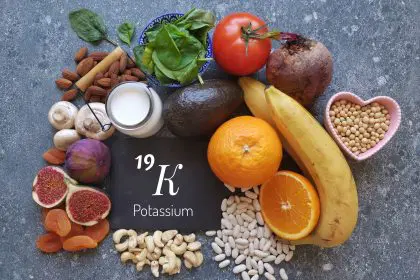High blood pressure often earns its reputation as the “silent killer” because it typically causes no symptoms while gradually damaging your cardiovascular system. With nearly half of American adults affected by this condition, understanding the factors that contribute to its development becomes crucial for prevention and management. While some risk factors remain beyond your control, many others can be modified through lifestyle changes, potentially saving your life. Here’s a comprehensive look at the twelve factors that may be silently raising your blood pressure.
Elevated blood pressure that’s not yet hypertension
The journey to high blood pressure often begins with slightly elevated readings that don’t yet qualify as hypertension. This condition, called elevated blood pressure, occurs when your readings consistently fall between 120-129 systolic (the top number) and below 80 diastolic (the bottom number). These numbers indicate your heart is working harder than optimal to pump blood throughout your body.
The danger lies in the progression pattern. Without intervention, about 25-30% of people with elevated blood pressure will develop full hypertension within five years. This intermediate stage serves as a crucial warning sign and opportunity for preventive action. Regular blood pressure monitoring becomes especially important if you’ve received elevated readings, as early intervention can prevent progression to hypertension.
The good news is that lifestyle modifications made during this early stage often prove highly effective. Simple changes like reducing sodium intake, increasing physical activity, and managing stress can frequently bring elevated numbers back to normal range without medication. Consider this stage your body’s early warning system, providing a chance to make adjustments before more serious problems develop.
Hidden dietary sodium sources
While many people associate high sodium intake with liberal use of the salt shaker, the reality is far more complex. The average American consumes about 3,400 milligrams of sodium daily, with over 70% coming from processed foods and restaurant meals rather than salt added during home cooking or at the table.
Seemingly innocent foods often harbor surprising amounts of sodium. A single restaurant sandwich can contain more than 1,500 milligrams, while a cup of canned soup might pack 700-900 milligrams. Even sweet-tasting foods like cookies or breakfast cereals can contain significant sodium as a preservative. This hidden sodium gradually raises blood pressure by causing your body to retain water, increasing blood volume and pressure against artery walls.
Reading nutrition labels becomes essential for managing sodium intake. Look for foods with less than 140 milligrams of sodium per serving, and be particularly cautious with convenience foods, canned products, deli meats, and restaurant meals. When cooking at home, experiment with herbs, spices, citrus, and vinegars to add flavor without sodium. Over time, your taste buds adjust to lower sodium levels, making healthy choices more satisfying.
Inadequate potassium consumption
While excessive sodium receives much attention, inadequate potassium intake plays an equally important role in blood pressure regulation that often goes overlooked. Potassium helps balance sodium’s effects by relaxing blood vessel walls and increasing sodium excretion through urine. Unfortunately, only about 2% of Americans meet the recommended daily potassium intake of 4,700 milligrams.
The modern diet, heavy in processed foods, typically provides only 2,500 milligrams of potassium daily. This imbalance—too much sodium, too little potassium—creates ideal conditions for blood pressure elevation. Studies show that increasing potassium intake can lower systolic blood pressure by 4-5 points and diastolic by 2-3 points, similar to the effect of some blood pressure medications.
Potassium-rich foods include sweet potatoes, spinach, avocados, bananas, beans, and yogurt. Incorporating these foods daily helps restore balance to your body’s mineral profile. For those taking certain medications, including some diuretics and heart medications, consult your healthcare provider before significantly increasing potassium intake, as these drugs can affect potassium levels.
Sedentary lifestyle patterns
The human body was designed for movement, but modern life increasingly revolves around sitting—at desks, in cars, and in front of screens. This sedentary pattern significantly impacts blood pressure through multiple mechanisms. Regular physical activity strengthens your heart, allowing it to pump more blood with less effort and reducing pressure on your arteries.
Even modest activity produces measurable benefits. Just 150 minutes of moderate activity weekly can lower blood pressure by approximately 5-8 mmHg. This reduction rivals the effects of some prescription medications. For those new to exercise, even small increases in daily movement can yield benefits. Simple activities like walking, gardening, or climbing stairs all contribute to improved blood pressure control.
The effects of exercise extend beyond immediate blood pressure reduction. Regular physical activity helps maintain healthy weight, reduces stress hormones, improves insulin sensitivity, and strengthens blood vessels—all factors that contribute to long-term blood pressure health. Breaking up periods of sitting with brief movement breaks every 30-60 minutes can also help minimize the negative effects of a sedentary lifestyle.
Stress and sleep disruption
The mind-body connection plays a powerful role in blood pressure regulation. Chronic stress triggers your body’s fight-or-flight response, releasing hormones that temporarily raise blood pressure by increasing heart rate and constricting blood vessels. When stress persists without adequate recovery periods, these temporary elevations can evolve into chronic hypertension.
Sleep disruption compounds these effects. Adults who regularly sleep less than 7 hours nightly face a significantly higher risk of developing high blood pressure. During normal sleep, blood pressure naturally decreases by 10-20%. This “dipping” pattern allows your cardiovascular system to recover from daily stresses. Interrupted or insufficient sleep prevents this essential recovery period, gradually increasing baseline blood pressure.
Developing effective stress management techniques and prioritizing sleep hygiene represent vital but often overlooked aspects of blood pressure control. Practices like deep breathing, meditation, yoga, and maintaining consistent sleep schedules help regulate the hormonal systems that influence blood pressure. For those experiencing chronic sleep problems, addressing underlying issues like sleep apnea becomes particularly important, as this condition strongly correlates with resistant hypertension.
Alcohol consumption patterns
The relationship between alcohol and blood pressure follows a complex pattern. Light to moderate drinking appears neutral or possibly slightly beneficial for some aspects of heart health. However, consuming more than one drink daily for women or two for men reliably raises blood pressure, often by several points. Regular heavy drinking can lead to sustained hypertension and reduced effectiveness of blood pressure medications.
Alcohol elevates blood pressure through multiple mechanisms. It stimulates the sympathetic nervous system, increasing heart rate and blood vessel constriction. Alcohol also disrupts baroreceptors, the sensors that help regulate blood pressure, and may increase cortisol and other stress hormones. Additionally, alcoholic beverages add calories that contribute to weight gain, another blood pressure risk factor.
For those who drink, moderation becomes key. Limiting alcohol to occasional consumption or following recommended guidelines can help prevent alcohol-related blood pressure elevation. If you currently drink more heavily, gradually reducing intake often leads to noticeable blood pressure improvements within just a few weeks, sometimes lowering readings by 5-10 mmHg.
Tobacco and nicotine exposure
The harmful effects of tobacco extend well beyond the lungs, with significant implications for blood pressure and overall cardiovascular health. Each cigarette temporarily raises blood pressure for up to 30 minutes after smoking. For regular smokers, this creates repeated blood pressure spikes throughout the day. Over time, chemicals in tobacco damage blood vessel walls, reducing their elasticity and contributing to long-term blood pressure elevation.
Nicotine itself, whether from cigarettes, vaping products, or replacement therapies, acts as a stimulant that increases heart rate and blood pressure. While nicotine replacement therapies still represent a healthier alternative to smoking, they may not completely eliminate blood pressure effects. Emerging research on vaping suggests it too may impact cardiovascular health, though likely less severely than combustible tobacco products.
The good news is that quitting tobacco provides relatively quick blood pressure benefits. Within 20 minutes of your last cigarette, your heart rate and blood pressure begin to normalize. Extended abstinence allows blood vessels to gradually recover some of their former elasticity. For smokers with elevated blood pressure, quitting often yields more significant blood pressure reductions than medication alone.
Excess body weight distribution
The relationship between body weight and blood pressure involves more than just the number on the scale. Weight distribution matters significantly, with abdominal obesity posing particularly high risks for blood pressure elevation. Excess fat around the midsection produces inflammatory compounds and hormones that directly impact blood pressure regulation.
Each kilogram (2.2 pounds) of weight loss typically reduces blood pressure by about 1 mmHg. However, losing abdominal fat yields disproportionately greater benefits compared to fat lost from other body areas. This pattern explains why waist circumference often predicts cardiovascular risk better than overall weight or BMI.
For those carrying extra weight, even modest reductions produce meaningful health improvements. Losing just 5-10% of body weight significantly lowers blood pressure for most people with hypertension. Focus on sustainable dietary changes and increased physical activity rather than rapid weight loss, as maintaining weight loss provides ongoing blood pressure benefits.
Underlying health conditions
Several chronic health conditions significantly increase blood pressure risk, creating a complex relationship where each condition may worsen the other. Diabetes serves as a prime example, with about 60% of diabetics eventually developing hypertension. The high blood sugar levels in diabetes damage blood vessels and impair the kidneys’ ability to regulate fluid balance, contributing to blood pressure elevation.
Kidney disease and blood pressure form another dangerous pairing. The kidneys play a central role in blood pressure regulation through managing fluid balance and producing regulatory hormones. When kidney function declines, blood pressure typically rises. Conversely, high blood pressure accelerates kidney damage, creating a problematic cycle that requires careful management.
Sleep apnea represents another significant but often overlooked contributor to resistant hypertension. The repeated oxygen level drops and sleep disruption associated with this condition activate stress hormones and impair blood pressure regulation. For people with high blood pressure not responding well to treatment, sleep apnea evaluation may uncover an important contributing factor.
Age-related vascular changes
While many risk factors can be modified, aging itself impacts blood pressure through natural changes to the cardiovascular system. As we age, large arteries gradually lose elasticity, becoming stiffer and less responsive to pressure changes. This arterial stiffening, called arteriosclerosis, increases systolic blood pressure in particular.
Statistics illustrate this relationship clearly. While only about 7-8% of adults in their 20s have high blood pressure, the prevalence rises to approximately 63% by age 60. After age 65, isolated systolic hypertension—where only the top number is elevated—becomes increasingly common as arteries lose flexibility while overall circulation remains adequate.
Though aging itself cannot be prevented, maintaining healthy habits throughout life can significantly reduce the impact of age-related vascular changes. Regular exercise, particularly aerobic activities and strength training, helps preserve vascular function. Dietary patterns like the DASH or Mediterranean diets appear to slow vascular aging. These lifestyle approaches become increasingly important with advancing age to minimize the effects of natural arterial changes.
Genetic predisposition
Family history significantly influences blood pressure risk, with genetics accounting for approximately 30-50% of blood pressure variation between individuals. Having a first-degree relative with hypertension nearly doubles your own risk. This genetic component explains why some people develop high blood pressure despite maintaining healthy habits, while others with less healthy lifestyles maintain normal readings.
Genetic factors influence blood pressure through multiple mechanisms. Some genetic variations affect how efficiently your kidneys process sodium, while others impact blood vessel structure or responsiveness to regulatory hormones. These inherited traits create different blood pressure baselines and responses to environmental factors among individuals.
Understanding your family history allows for proactive management. If hypertension runs in your family, earlier and more frequent blood pressure screening becomes essential. While you cannot change your genetic makeup, knowing your predisposition allows for earlier intervention with lifestyle modifications and, when necessary, medication. This personalized approach can effectively counteract genetic risks before serious complications develop.
Race and ethnicity factors
Blood pressure patterns show significant variation across racial and ethnic groups, with particularly high rates among Black Americans. Nearly 56% of Black adults have hypertension compared to about 48% of white adults. Moreover, high blood pressure often develops earlier and reaches higher levels in Black individuals, contributing to higher rates of stroke, heart disease, and kidney failure in this population.
These differences arise from complex interactions between genetic, environmental, and societal factors. Some evidence suggests differences in salt sensitivity, with Black individuals generally showing greater blood pressure responses to sodium intake. Additionally, systemic factors including healthcare access disparities, chronic stress from discrimination, and environmental exposures all contribute to these blood pressure differences.
Understanding these patterns allows for more targeted prevention and treatment approaches. For those in higher-risk groups, more frequent blood pressure screening and earlier intervention become especially important. Healthcare providers increasingly recognize the need for culturally appropriate education and treatment plans that address the specific factors affecting each population group.
Medication and supplement effects
Many people remain unaware that various medications—including some taken for entirely unrelated conditions—can raise blood pressure as a side effect. Common culprits include nonsteroidal anti-inflammatory drugs (NSAIDs) like ibuprofen, certain antidepressants, decongestants, steroids, and some hormonal medications including birth control pills.
Even some dietary supplements and herbal remedies can impact blood pressure. Products containing stimulants like caffeine, bitter orange, or ephedra typically raise blood pressure. Licorice root, found in some teas and supplements, can cause sodium retention and potassium loss, potentially elevating blood pressure significantly with regular use.
Always inform healthcare providers about all medications and supplements you take, including over-the-counter products. For those with elevated blood pressure or hypertension, regular medication reviews become especially important. Sometimes, simply adjusting timing, dosage, or switching to alternative treatments can effectively address medication-related blood pressure effects.














